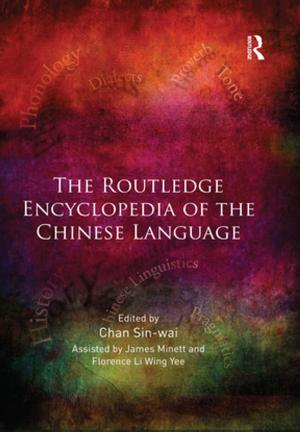Mapping China and Managing the World
Culture, Cartography and Cosmology in Late Imperial Times
Nonfiction, History, Asian, China, Social & Cultural Studies, Social Science, Cultural Studies, Ethnic Studies| Author: | Richard J. Smith | ISBN: | 9781136209215 |
| Publisher: | Taylor and Francis | Publication: | May 20, 2013 |
| Imprint: | Routledge | Language: | English |
| Author: | Richard J. Smith |
| ISBN: | 9781136209215 |
| Publisher: | Taylor and Francis |
| Publication: | May 20, 2013 |
| Imprint: | Routledge |
| Language: | English |
From the founding of the Qin dynasty in 221 BCE to the present, the Chinese have been preoccupied with the notion of ordering their world. Efforts to create and maintain order are expressed not only in China’s bureaucratic institutions and methods of social and economic organization but also in Chinese philosophy, religious and secular ritual, and comprehensive systems of classifying all natural and supernatural phenomena.
Mapping China and Managing the World focuses on Chinese constructions of order (zhi) and examines the most important ways in which elites in late imperial China sought to order their vast and variegated world. This book begins by exploring the role of ancient texts and maps as the two prominent symbolic devices that the Chinese used to construct cultural meaning, and looks at how changing conceptions of ‘the world’ shaped Chinese cartography, whilst both shifting and enduring cartographic practices affected how the Chinese regarded the wider world. Richard J. Smith goes on to examine the significance of ritual in overcoming disorder, and by focusing on the importance of divination shows how Chinese at all levels of society sought to manage the future, as well as the past and the present. Finally, the book concludes by emphasizing the enduring relevance of the Yijing (Classic of Changes) in Chinese intellectual and cultural life as well as its place in the history of Sino-foreign interactions.
Bringing together a selection of essays by Richard J. Smith, one of the foremost scholars of Chinese intellectual and cultural history, this book will be welcomed by Chinese and East Asian historians, as well as those interested more broadly in the culture of China and East Asia.
From the founding of the Qin dynasty in 221 BCE to the present, the Chinese have been preoccupied with the notion of ordering their world. Efforts to create and maintain order are expressed not only in China’s bureaucratic institutions and methods of social and economic organization but also in Chinese philosophy, religious and secular ritual, and comprehensive systems of classifying all natural and supernatural phenomena.
Mapping China and Managing the World focuses on Chinese constructions of order (zhi) and examines the most important ways in which elites in late imperial China sought to order their vast and variegated world. This book begins by exploring the role of ancient texts and maps as the two prominent symbolic devices that the Chinese used to construct cultural meaning, and looks at how changing conceptions of ‘the world’ shaped Chinese cartography, whilst both shifting and enduring cartographic practices affected how the Chinese regarded the wider world. Richard J. Smith goes on to examine the significance of ritual in overcoming disorder, and by focusing on the importance of divination shows how Chinese at all levels of society sought to manage the future, as well as the past and the present. Finally, the book concludes by emphasizing the enduring relevance of the Yijing (Classic of Changes) in Chinese intellectual and cultural life as well as its place in the history of Sino-foreign interactions.
Bringing together a selection of essays by Richard J. Smith, one of the foremost scholars of Chinese intellectual and cultural history, this book will be welcomed by Chinese and East Asian historians, as well as those interested more broadly in the culture of China and East Asia.















